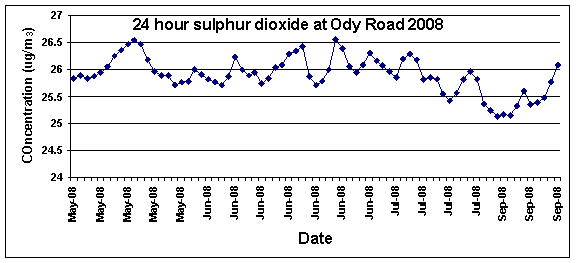Sulphur Dioxide
Within this section…
Sulphur dioxide (SO2) is a colourless, soluble gas with a characteristic pungent smell. It is mainly produced by the combustion of fossil fuels containing sulphur however can also be the product of some industrial processes.
SO2 is a potent respiratory irritant when inhaled at high concentrations and acts directly on the upper airways (nose, throat, trachea and major bronchi) producing a rapid response within minutes. It achieves maximum effect within 10 to 15 minutes, particularly in individuals with significant airway reactivity, such as asthmatics and those suffering similar bronchospastic conditions.
The symptoms of SO2 inhalation include wheezing, chest tightness, shortness of breath or coughing. These symptoms are related to a reduction in ventilatory capacity (for example, reduction in forced expiratory volume in one second, or FEV1) and increased specific airway resistance. If exposure occurs during exercise, the observed response may be accentuated because of an increased breathing rate.
Results from SO2 Monitoring
In Northland, the most significant industrial source of SO2 is the New Zealand Refining Company Limited, located at Marsden Point. The prevailing wind in this area frequently disperses emissions from the refinery towards the Whangarei Heads, a predominantly rural, residential area. In May 2008, NRC began to monitor SO2 levels using a continuous monitoring station based at Taurikura Bay.
SO2 results from this site show that peak concentrations are well below the National Environmental Standard of 350 mg/m3, and also below the current 24 hour ambient air quality standard of 120 mg/m3. These results are shown in the chart below.

Future monitoring
Another industrial source of SO2 in Northland is Ballance Agri-nutrients, a fertiliser manufacturing company situated on Port Road in Whangarei. NRC will commence a programme of monitoring SO2 levels along Port Road in early 2009.
In addition to existing monitoring programmes, NRC is planning to establish a carbon monoxide monitoring programme in Whangarei CBD during 2009. Carbon monoxide is a colourless and odourless, yet highly toxic gas which is produced from the partial oxidation of carbon-containing compounds, notably in internal-combustion engines.
